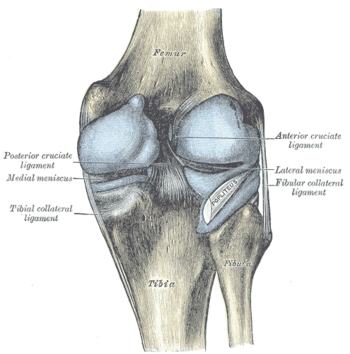 |
| Capsule of right knee-joint (distended). Posterior aspect. (Photo credit: Wikipedia) |
For joint replacements, like a knee or hip, is muscle attached to the artificial implant?
Ordinarily “no muscle attaches to any hip or knee implant,” said Dr. Mathias P. Bostrom of the Hospital for Special Surgery in Manhattan. The only human tissue that adheres to an implanted joint is bone.
The link is made either with cement or directly to the bone. When the connection is direct, the bone-producing cells grow new material that forms a bond with the implant, a process called osseointegration.
“A lot of knee implants use a kind of cement, really more of a grout, that fixes to the bone itself,”
Dr.Bostrom said. “It is an acrylic, similar to Plexiglas, called PMMA, for polymethyl methacrylate.”
In the case of a tumor prosthesis for a bone like the femur – in which a lot of bone is removed and large segments are replaced with metal – there may be some linkage of muscle and tendon to implant, he said.
In most joint implants, however, the muscle is still attached to the bone via the tendon, and the surgeon especially tries to avoid detaching any muscle insertion in the hip or knee.
“We want the tendon’s attachment to the bone to be intact,” Dr. Bostrom said.
Taken from TODAY Saturday Edition, June 15, 2013










No comments:
Post a Comment